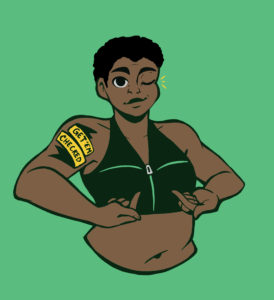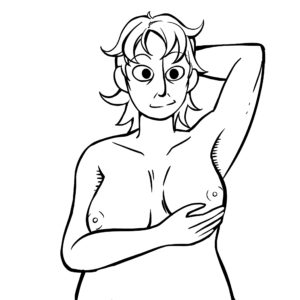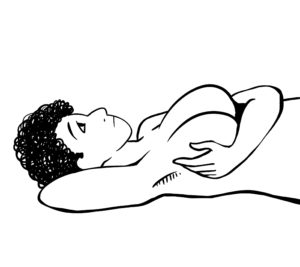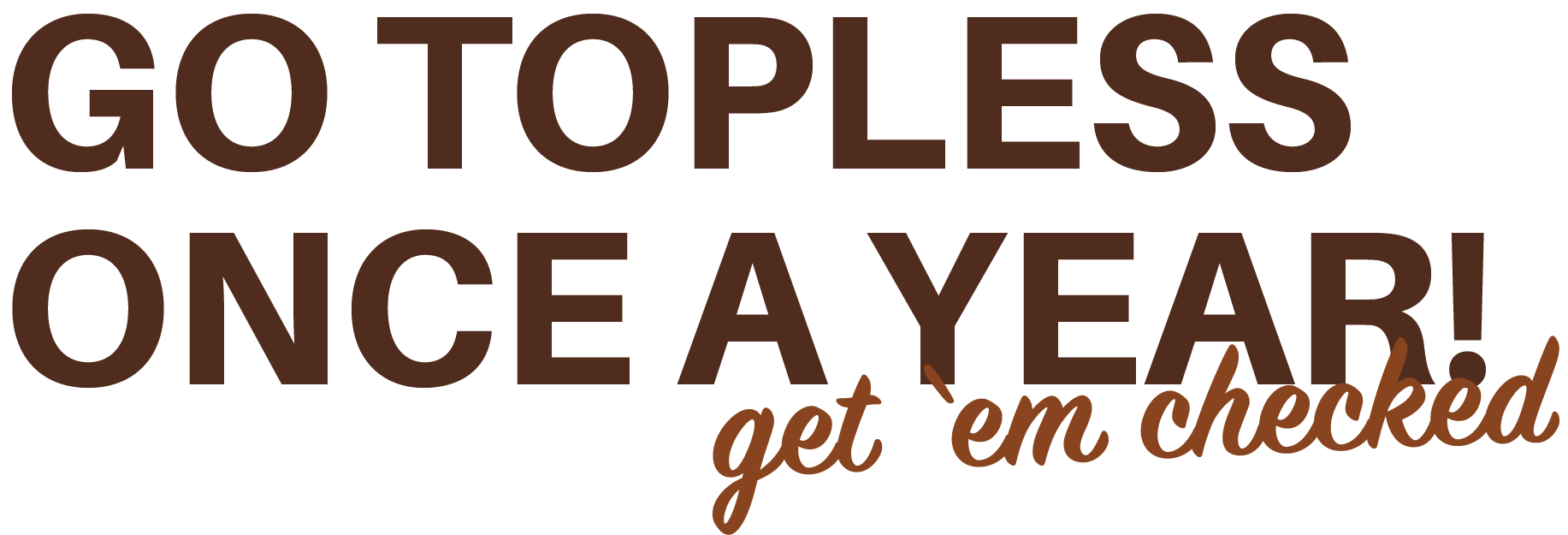Who: Lesbian, bisexual, & trans women, trans men, and non-binary people with breast tissue.
When: Ages 25-40.
What …
 Know Your Body
Know Your Body
Conduct monthly breast/chest self-exams. (Keep scrolling to learn how.) If you notice any changes or anything unusual, call your doctor or nurse practitioner right away.
Attend Regular Physicals
Schedule a well-check appointment with your doctor or nurse practitioner every year. They will check your breasts/chest for changes or concerns.
Asses your risk
Talk to your doctor or nurse practitioner about your breast cancer risk. A family history of breast cancer, a BMI greater than 35, and other factors increase your risk. Your doctor or nurse may recommend that you start mammograms before age 40.
Be Your Own Best Breast/Chest Health Ally
Lesbian & bisexual cis women, trans women & men, and non-binary folks with breast tissue can all improve health outcomes by conducting Breast/Chest Self Exams. Beginning at age 25, make it a habit to do a monthly check of your breast/chest. If you notice any changes of anything unusual, call your doctor or nurse practitioner right away. You are worthy of health. And you are worthy of timely care!
How to Conduct a Self Exam
Standing Up
Use the pads of your fingers to examine each breast or each side of your chest from your collar bone to your ribs.

• Starting in the middle of your
armpit, make small circles with
your fingertips. Make the circles
going up and down the area,
moving from top to bottom.
Continue this motion all the way
across to the middle of your chest.
• Feel for any lumps, thickening,
or hardened knots.
In a Mirror
Look at your breasts/chest with your arms at your sides. Next, raise your arms high overhead.
• Look at the size and shape of
 each nipple and the tissue around
each nipple and the tissue around
it. Check for swelling, lumps,
dimpling (looks like an orange
peel), scaly skin, or other skin
changes.
• Put your hands on your hips
and press firmly to flex your
chest muscles. Look for any
dimpling, puckering, or changes,
particularly on one breast or one
side of your chest.
Lying Down
When you lie down, your breast/chest tissue spreads out evenly along the chest wall.
• Place a pillow below your right
 shoulder and put your right arm
shoulder and put your right arm
behind your head.
• Using your left hand, move the
pads of your fingers around your
right breast/chest in small circular
motions covering the entire breast
area and armpit.
• Use light, medium, and firm
pressure to feel the different levels
of your tissue.
• Squeeze the nipple, check for
discharge and lumps.
• Repeat these steps for your left
breast/chest.
